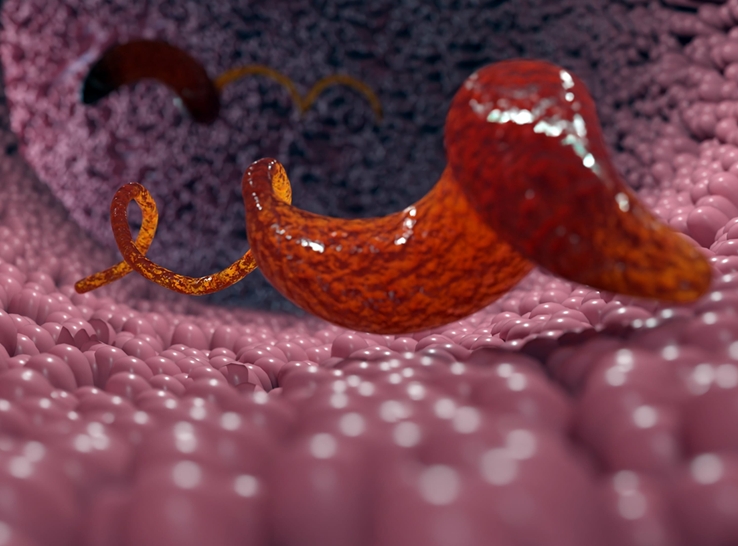Campylobacter jejuni is a leading cause of bacterial-derived gastroenteritis in the United States, due to its ability to asymptomatically reside within the intestinal tracts of poultry.
During processing, the bacterium can be released from birds and contaminate the meat where, despite the efforts of processors and grocers, it can survive and remain infectious for extended periods of time. Consumers may then be infected by C. jejuni after eating undercooked, contaminated food.
“The ability of C. jejuni to survive this process is surprising since the bacterium does not thrive under the conditions it encounters during processing and storage,” reported Jeremiah Johnson, PhD, principal research investigator and assistant professor at the University of Tennessee, for the study.
In particular, C. jejuni is sensitive to atmospheric levels of oxygen with cell viability being reduced following even brief exposure.
This observation led to the primary question of a research project: What bacterial factors does C. jejuni possess that allows it to survive processing and storage so that it can remain infectious to the consumer?
Three objectives
Funded by USPOULTRY and its Foundation, the original objectives for this study were to:
- Construct defined C. jejuni mutants and confirm they do not survive aerobic and/or refrigerated conditions;
- Examine for defined C. jejuni mutant survival on chicken meat stored under retail conditions; and
- Determine whether defined C. jejuni mutants colonize chickens as readily as the parental strain.
Johnson and his team previously screened approximately 8,500 transposon mutants for their ability to survive up to two days under aerobic, refrigerated temperatures and quantitatively determined that 155 mutants exhibited <5% survival. Those mutants were prioritized based on the extent to which they were impacted, and the experiment was repeated three times.
From that, it was determined 11 transposon mutants were reproducibly decreased for survival under aerobic, refrigerated conditions. For several of these mutants, the disrupted gene was identified using whole genome sequencing. Seven mutants were constructed of the different candidate genes and repeated the survival studies, finding that each reproducibility exhibited decreased survival when compared to the parental strain.
Retail chicken breast
Investigators purchased retail chicken breast meat from a local grocer and divided it into one centimeter cubes and individually inoculated each with the seven C. jejuni mutants and the parental strain.
The inoculated chicken cubes were stored for up to five days at aerobic, refrigerated temperatures and the number of viable bacteria was enumerated every day throughout the experiment on selective media. This experiment was conducted a minimum of three times for each of the mutants.
Due to relatively high variability in survival among the seven strains on chicken meat, researchers were only able to determine that mutation of one specific gene significantly reduced aerobic, refrigerated survival.
White leghorn chickens were hatched in-house and inoculated with either the parental strain, the mutant strain or a combination of both strains at a 1:1 ratio on the day of hatch. These infected chicks were housed for seven days, euthanized and then their cecal contents were harvested.
The number of viable C. jejuni within ceca of these birds was enumerated using selective media, which found that the specific mutant strain is unable to colonize the chicken cecum. This was supported by the observation that chicks infected with both strains ended up colonized with only parental C. jejuni.
The research was funded by USPOULTRY and the USPOULTRY Foundation and made possible in part by an endowing Foundation gift from Koch Foods and proceeds from the International Poultry Expo, part of the International Production & Processing Expo (IPPE).
Editor’s note: Content on Modern Poultry’s Industry Insights pages is provided and/or commissioned by our sponsors, who assume full responsibility for its accuracy and compliance.








